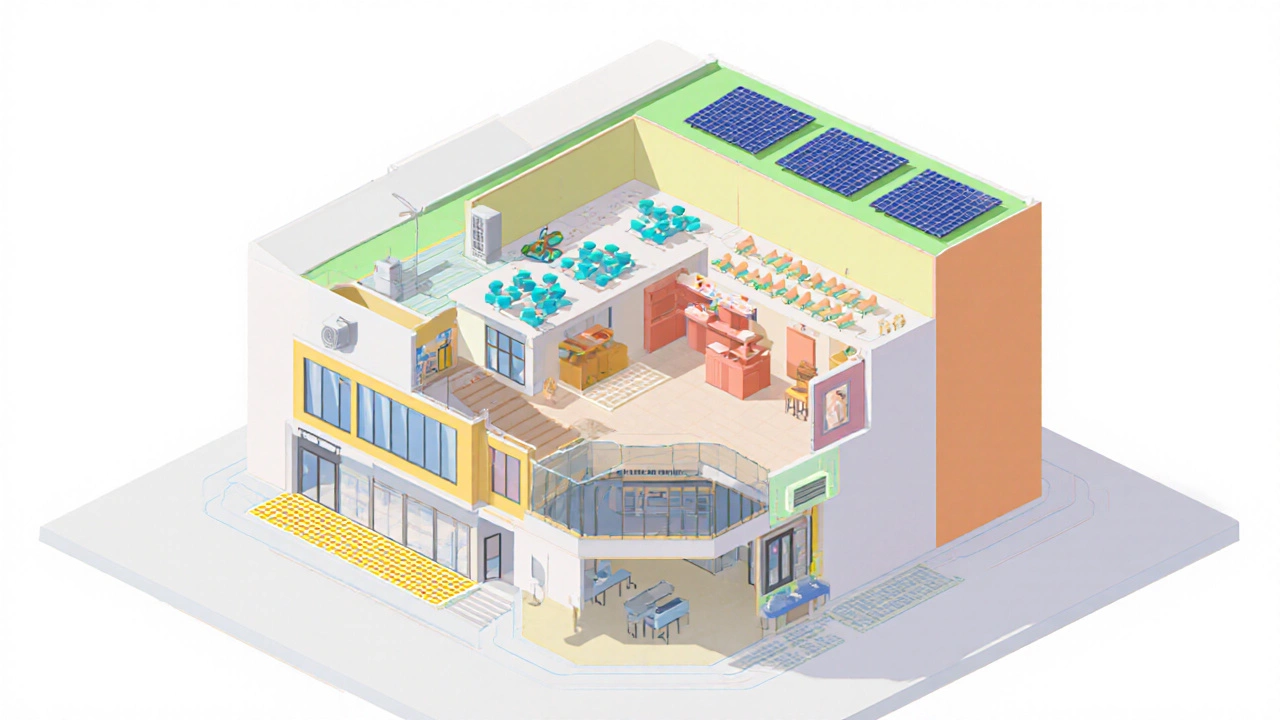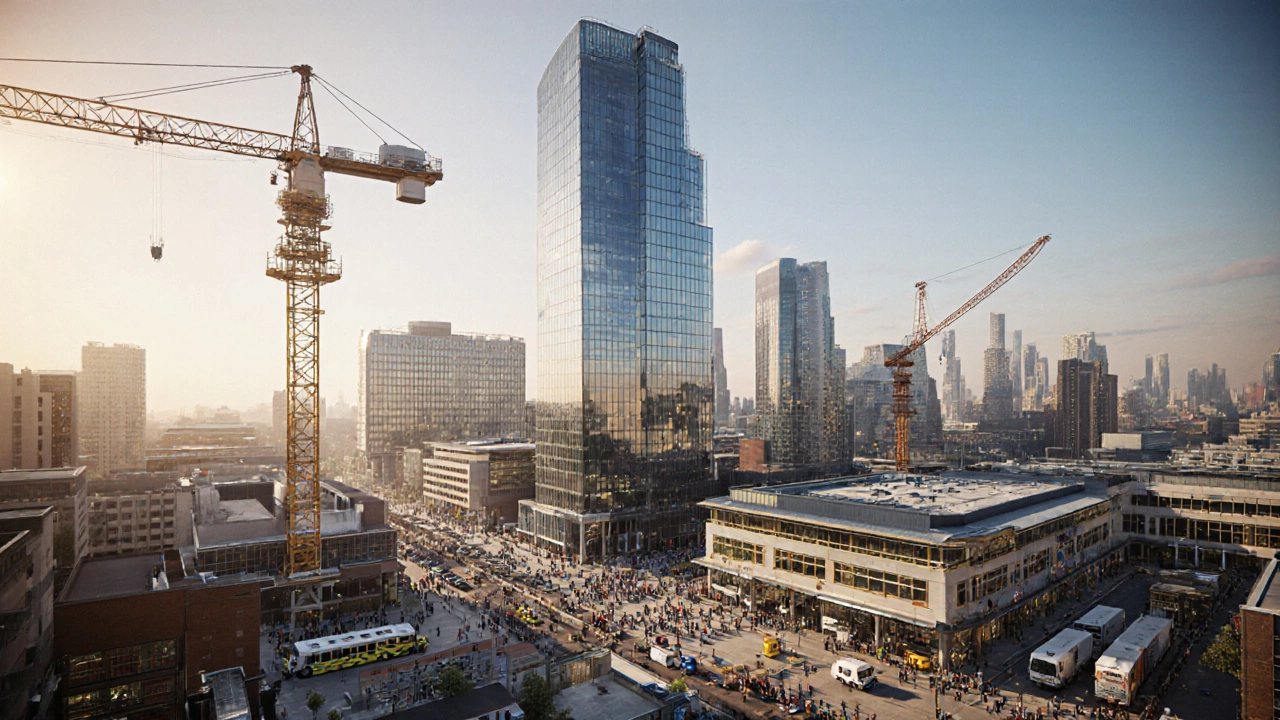What Is Classified as Commercial in Construction?
UK Construction Use Class Classifier
Identify Your Building's Use Class
Select the primary intended use of your building project to determine the correct UK Planning Use Class.
Use Class Classification
Key Regulatory Requirements
Common Pitfall
Did you know the UK construction market tops £500billion each year, and a huge slice of that comes from projects labeled “commercial”? But what exactly qualifies a building as commercial? If you’ve ever wondered why a new office tower falls under a different set of rules than a neighbourhood house, you’re in the right place.
Key Takeaways
- Commercial construction covers any building used for business, trade, or public services.
- It is distinguished from residential, industrial, and mixed‑use projects by purpose, code requirements, and financing.
- UK Building Regulations and the Building Act 1984 define the legal boundaries.
- Typical commercial types include offices, retail stores, hotels, schools, hospitals, and warehouses.
- Understanding the classification helps with budgeting, compliance, and contract strategy.
Commercial construction is a sector of the building industry that focuses on erecting structures primarily intended for business activities, trade, or public services. It covers everything from office blocks and retail centres to hospitals and schools, each subject to specific codes, financing models, and risk considerations. In everyday language, anything that isn’t a home or a factory usually lands in this bucket, but the legal definition is a bit more precise.
How the Law Draws the Line
The UK Building Regulations and the Building Act 1984 set out the framework. They classify a project based on its intended use rather than its size or construction method. If the dominant function is to house businesses, public services, or consumers, the project is deemed commercial.
Key legal checkpoints include:
- Use class - the primary activity (e.g., B1 for offices, B2 for retail).
- Occupancy load - how many people are expected to use the space regularly.
- Fire safety requirements - stricter standards for public gathering areas.
- Accessibility standards - mandatory for schools, hospitals, and most public venues.
Typical Types of Commercial Buildings
Below is a quick run‑through of the most common commercial categories you’ll encounter in the UK market.
- Office buildings - from single‑tenant headquarters to multi‑storey business parks.
- Retail premises - high streets, shopping malls, and convenience stores.
- Hospitality venues - hotels, motels, and serviced apartments.
- Educational facilities - schools, colleges, and specialised training centres.
- Healthcare structures - hospitals, clinics, and care homes.
- Warehouse and logistics hubs - distribution centres and fulfillment warehouses.
Each type brings its own set of design criteria, from ventilation rates in hospitals to daylighting standards in schools.

Commercial vs. Residential vs. Industrial: A Side‑by‑Side Look
| Aspect | Commercial | Residential | Industrial |
|---|---|---|---|
| Primary Use | Business, trade, public services | Living spaces | Manufacturing, processing, storage |
| Key Regulations | Building Regulations Part B (Fire), Part M (Access) | Part L (Energy), Part F (Ventilation) | Part G (Sanitation), Part H (Noise) |
| Typical Contract Type | Design‑and‑Build, JCT Commercial | JCT Minor Works, Homeowner agreements | NEC3 Engineering, EPC contracts |
| Financing | Commercial mortgages, equity investment | Residential mortgages, government schemes | Project finance, corporate loans |
| Occupancy Load | Often > 100 people | Typically ≤ 5 per unit | Variable, often high‑density workforces |
Seeing the differences side by side helps clarify why a mixed‑use tower with retail on the ground floor and offices above still falls under commercial rules for most of its floor area.
Why Classification Matters for Stakeholders
Whether you’re an architect, contractor, investor, or building owner, knowing the classification steers three major decisions:
- Compliance strategy - Different codes mean different fire safety systems, accessibility features, and energy performance targets.
- Risk allocation - Commercial contracts often shift design risk to the contractor, while residential projects may keep it with the client.
- Financing options - Lenders assess risk based on use class; commercial loans usually demand higher equity ratios but can offer better returns.
Missing the mark can lead to costly redesigns, delayed approvals, or even legal penalties.
Common Pitfalls and How to Avoid Them
Even seasoned developers stumble over classification nuances. Here are the top three traps and quick fixes:
- Misreading the Use Class: A building with a ground‑floor café and upstairs co‑working space might be split into B2 (Retail) and B1 (Office). Cross‑check each floor’s dominant function with the local planning authority.
- Overlooking Mixed‑Use Rules: Mixed‑use projects trigger additional fire compartmentation and separate egress routes. Engage a fire safety engineer early.
- Assuming Residential Standards Apply: Many developers default to residential energy calculations, which can underdeliver for larger commercial floor plates. Use Part L‑commercial calculations from the start.
Pro tip: Run a “use‑class audit” during the concept phase to lock down the correct classification before any drawings are produced.

Steps to Confirm Commercial Classification
- Define the primary intended use for each building zone.
- Map the use to the UK Planning Use Classes (B1, B2, etc.).
- Consult the local building control office to verify required regulations.
- Document the classification in the project brief and contract documents.
- Secure the appropriate construction insurance and financing based on the final classification.
Following these steps ensures the project moves smoothly from design through handover.
Future Trends Shaping Commercial Construction
As the UK pushes for net‑zero carbon by 2050, commercial buildings are at the forefront of innovation. Expect tighter energy performance standards, greater emphasis on modular construction, and more integrated digital twins for facilities management. These trends will tighten the link between classification and sustainability metrics, making early classification decisions even more critical.
Frequently Asked Questions
What defines a building as commercial in the UK?
A building is classified as commercial when its dominant function is to accommodate business activities, trade, or public services. The UK Building Regulations and the Building Act 1984 use the intended use (use class) to make this determination, not size or construction method.
How does commercial classification affect fire safety requirements?
Commercial projects must comply with Part B of the Building Regulations, which imposes stricter fire resistance, detection, and evacuation standards than residential buildings. This often means separate stairwells, fire‑rated walls, and advanced alarm systems.
Can a mixed‑use building be partly residential and partly commercial?
Yes. Mixed‑use developments combine different use classes within the same structure. Each zone is assessed separately, and the building as a whole must meet the most stringent regulations of the included uses.
What contract types are most common for commercial construction?
Design‑and‑Build and JCT Commercial contracts dominate, as they allocate design risk to contractors and streamline approvals. For larger projects, NEC3 Engineering contracts are also popular.
Does commercial classification impact financing terms?
Absolutely. Lenders view commercial loans as higher‑risk and typically require larger equity contributions, but they also offer longer terms and higher potential returns compared to residential mortgages.







Comments